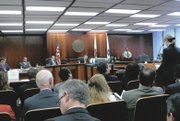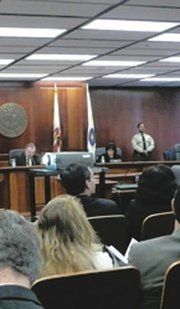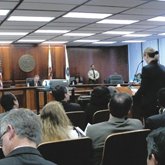DWP Rates Stable for 90 Days
Local businesses prepare for energy-rate increases proposed to encourage green alternatives.
Electricity rates in Los Angeles will remain stable—for now.
A fight over proposed energy-rate hikes for Los Angeles businesses and residents resulted in a draw after the Los Angeles City Council vetoed the Los Angeles Department of Water and Power’s proposed 5.7 percent rate increase.
Last month, Los Angeles Mayor Antonio Villaraigosa proposed increasing electricity rates to offset alternative-energy efforts. Villaraigosa’s plan, announced on March 15, caused an uproar among Los Angeles–area business owners, who would have seen their DWP bills grow by as much as 28 percent in the coming year and up to 37 percent by 2014.
The City Council then recommended a 4.5 percent increase for residents and a 5 percent to 6 percent increase for businesses in a compromise to Villaraigosa’s proposal. The City Council’s late-night veto on March 31 effectively tables the discussion for three months because California law stipulates that rate changes can only be implemented on a quarterly basis. The City Council’s recommended energy-rate increases for businesses amounted to an increase of 0.6 cents per kilowatt-hour. On March 27, the Council voted down Villaraigosa’s original proposal, which called for an increase of 0.8 cents per kilowatt-hour. During the City Council meeting, council members said they had been advised that a 4.5 percent to 6 percent increase is the smallest possible increase that will grow the troubled DWP’s revenues enough to keep the department’s bond rating from being downgraded.Resistance from business owners
As it was originally proposed, Villaraigosa’s plan would raise more than $600 million per year toward investment in renewable-power supplies and transmission, thanks to a “Carbon Reduction Surcharge.” The goal of the surcharge was to fund the city’s move away from coal-fueled power, reducing its dependence on coal by 20 percent in 2010. The mayor also argued that failure to approve his rate increase would result in the DWP reneging on a promise to give the city’s “general fund” $73 million—something that could push the city into the red by June 30.
The rate hikes, which come after similar hikes in the past year, were met with strong resistance from the fashion industry. Now that the rate hikes have been stalled for the quarter starting April 1, those industry and business groups say they will continue to oppose steep hikes.
Steven Needleman, president of ANJAC Fashion Properties, lobbied against the DWP rate increases and said he was pleased with the City Council’s move to reduce the proposed hikes. “To me, it was a battle won. The fashion industry has been decimated [by the recession], and those businesses that are still hanging on are barely making it. This is not the time to be increasing rates,” he said. ANJAC, which owns 1.5 million square feet of real estate in Los Angeles County, pays for utilities in its buildings and will most likely increase rents to accommodate the rising DWP rates, Needleman said.
“Building owners would be hard hit, but it would affect the people who run machinery—sewing machines, knitting machines, washing machines—the most,” said Ilse Metchek, executive director of the California Fashion Association. Kent Smith, executive director of the Los Angeles Fashion District, agreed, adding that many showroom-building owners pay for electricity themselves and would see their bills skyrocket even though they have worked with the DWP to make their buildings more energy-efficient. “Like every other business organization, we’re pretty upset about the rate hikes for a couple of reasons,” Smith said. “There was so little notice, but more importantly, the proposal is the first of a large number of increases. We all know we have to move to more renewable resources; we’re onboard with that. But the DWP cannot just suddenly boost prices that dramatically. The increases need to be phased-in in smaller increments over a longer period of time.”
Other critics of the rate hikes said the move could kill jobs even as the mayor promised to create “green” jobs within the city. “In an era of declining revenues and increasing costs, people are the first to get cut,” said Carol Schatz, president and chief executive of the Central City Association. Transparency is also an issue, with business groups, council members and environmentalists alike arguing that not enough information has been provided as to how and where the mayor intends to spend the money collected under the “Carbon Reduction Surcharge.” Some argued that the plan for reducing the city’s dependence on coal is fundamentally flawed because there is no plan to reduce the amount of coal-fueled power the city buys, only to increase the amount of renewable energy it purchases.More rate hikes on the horizon
Even as this first round of rate hikes has been stymied, business owners and associations are weary of rate increases and environmental legislation that are coming down the pike.
The mayor has voiced his disappointment with the reduced rate increases, telling the Los Angeles Times that he has “serious reservations” about the City Council’s actions and is expected to renew his energy rate-hike efforts.
On a grander scale, Assembly Bill 32, a state measure also known as the Global Warming Solutions Act, is currently in the rulemaking stages but is slated to go into effect in 2011. The bill, which focuses on reducing greenhouse-gas emissions to 1990 levels by 2020, will raise energy prices. “If AB 32 is implemented the way it was written, it will seal California’s fate with regard to job losses and economic development. It would kill economic development and ensure job losses,” said the Central City Association’s Schatz.
Not everyone is concerned, however. Dotan Shoham, owner of the Pacific Blue Dye House and Gypsy 05 contemporary line, is blissfully unaware of the ruckus surrounding energy prices. In December Shoham installed rooftop solar panels on his 30,000-square-foot facility and has since seen his energy bills drop 80 percent. Plans to convert the dye house’s water-heating system to solar energy will drop Shoham’s dependence on city power even more. “I didn’t do it because [energy] prices were going up. The focus was always to be friendlier to the environment, but saving money makes it a win-win situation for us and the environment. The only losers here are the DWP and the gas company.”
























